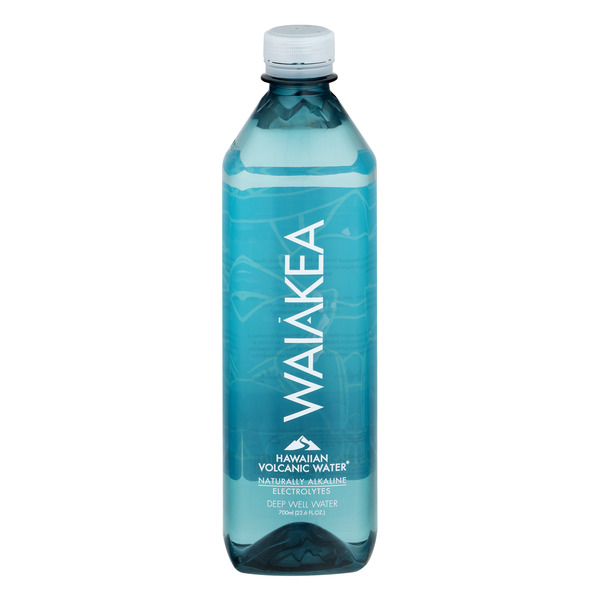
Waiakea Hawaiian Volcanic Water
32/100
- Lab Tested
- Yes
- Harmful Ingredients
- 12
- Nutrients
- 10
- Microplastics
- High Risk
Description
Waiakea is a premium bottled water sourced from volcanic Hawaiian aquifers. It is rich in minerals and electrolytes, promoting hydration and wellness. While it offers health benefits such as improved hydration and mineral intake, concerns include the environmental impact of plastic bottles and potential contamination from storage.
Contaminants
Sulfate
2.64 mg/LCan cause diarrhea, especially in infants and unaccustomed individuals, pose risks to susceptible populations, and are subject to ongoing regulatory evaluation due to potential health effects.
Arsenic
0.000054 mg/LCarcinogenic, neurotoxic, increased risk of cardiovascular disease, skin lesions, reproductive toxicity, increased risk of diabetes, developmental effects
Barium
0.00046 mg/LCan lead to increased blood pressure, heart and nervous system problems, and long-term exposure may cause severe health effects like kidney damage and impacts on other organs.
Fluoride
0.004 mg/LCan cause dental and skeletal fluorosis, affecting teeth and bone health, and may potentially impact cognitive development in children.
Nitrate
0.24 mg/LHigh levels of nitrate in drinking water can cause methemoglobinemia, or "blue baby syndrome," in infants, a condition that reduces the blood's ability to carry oxygen . Long-term exposure to elevated nitrate levels has been associated with an increased risk of certain cancers, thyroid dysfunction, and potential reproductive issues .â
Nitrite
0.006 mg/LHarmful, especially to infants and pregnant women, as it interferes with blood's ability to carry oxygen, potentially leading to a condition known as methemoglobinemia or "blue baby syndrome".
Antimony
0.000139 mg/LRespiratory irritation, skin problems, and more severe effects such as cardiovascular and lung diseases.
Vanadium
0.0125 mg/LThe main source for potentially toxic effects caused by vanadium is exposure to high loads of vanadium oxides in the breathing air of vanadium processing industrial enterprises. Vanadium can enter the body via the lungs or, more commonly, the stomach. Most of the dietary vanadium is excreted.
Chromium
0.0012 mg/LPotential toxicity at high doses, possible kidney or liver damage with excessive supplementation, limited evidence for benefits in healthy individuals
Gross Beta
1.22 pCi/LInternal tissue damage, increased cancer risk, and potential harm to the thyroid.
Gross Alpha
0.219 pCi/LInternal tissue damage and increased cancer risk due to their ionizing nature when ingested or inhaled.
Radium 226/228
0.55 pCi/LIncreased cancer risk, especially bone cancer, due to its radioactivity when ingested.
Ingredients & Minerals
Chloride
2.019 mg/LEssential electrolyte, supports fluid balance, supports nervous system function, supports muscle function
Silica
35 mg/LCalcium
6.6 mg/LSupports bone health, essential for muscle function, vital for nerve transmission, important for cardiovascular health
Potassium
1.9 mg/LSupports cardiovascular health, helps regulate blood pressure, essential for nerve and muscle function, reduces risk of stroke
Sodium
5.97 mg/LEssential electrolyte, supports nerve function, maintains fluid balance
- 3.5 mg/L
Boron
0.00348 mg/LSupports bone health, regulates inflammatory response, assists in mineral metabolism, may benefit cognitive function
Molybdenum
0.0002425 mg/LEssential cofactor for enzymes, supports sulfur amino acid metabolism, assists in detoxification of sulfites
Phosphorus
0.04635 mg/LSupports bone formation, energy metabolism, cellular function, DNA and RNA synthesis
Strontium
0.0297 mg/LMay improve bone mineral density in certain populations